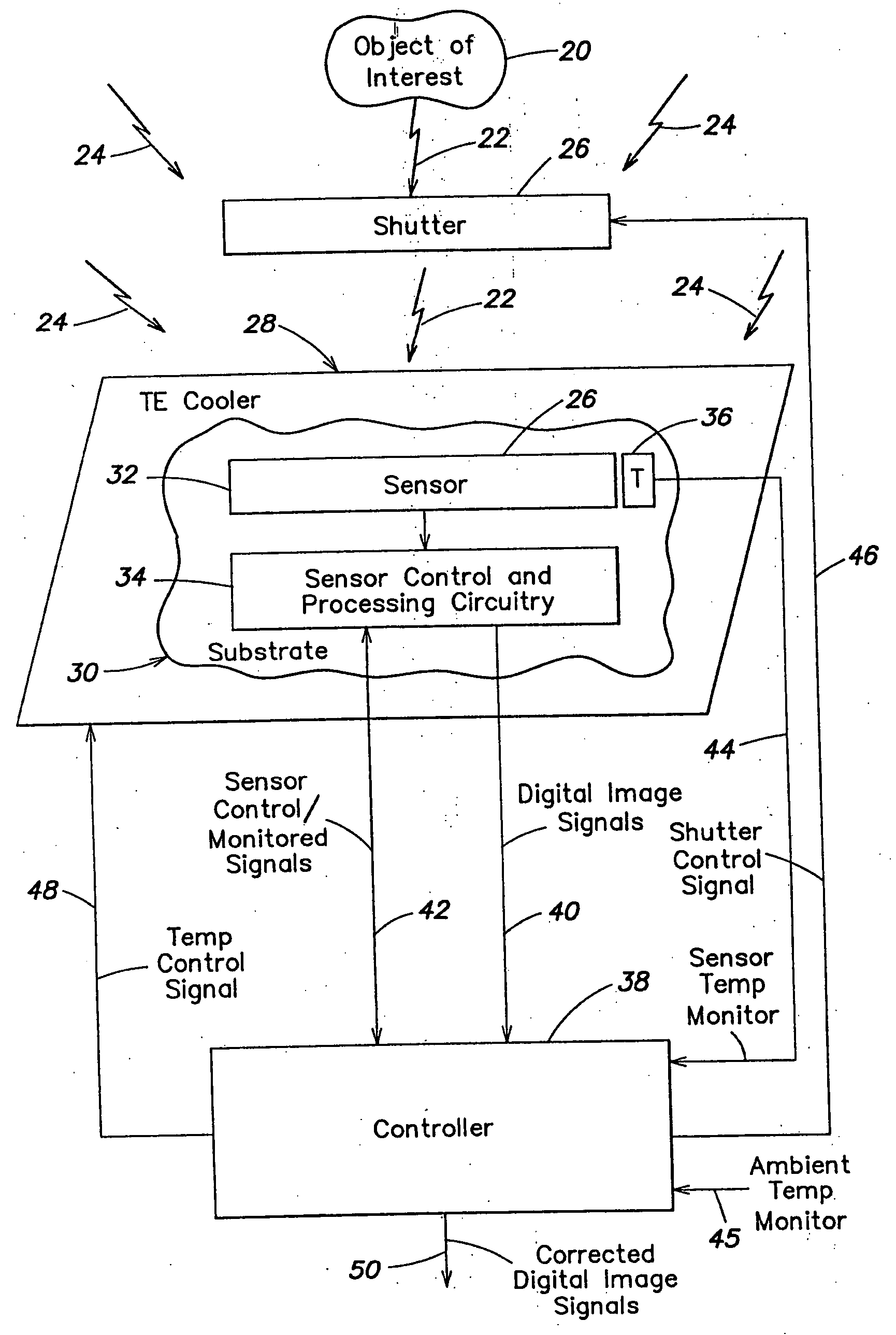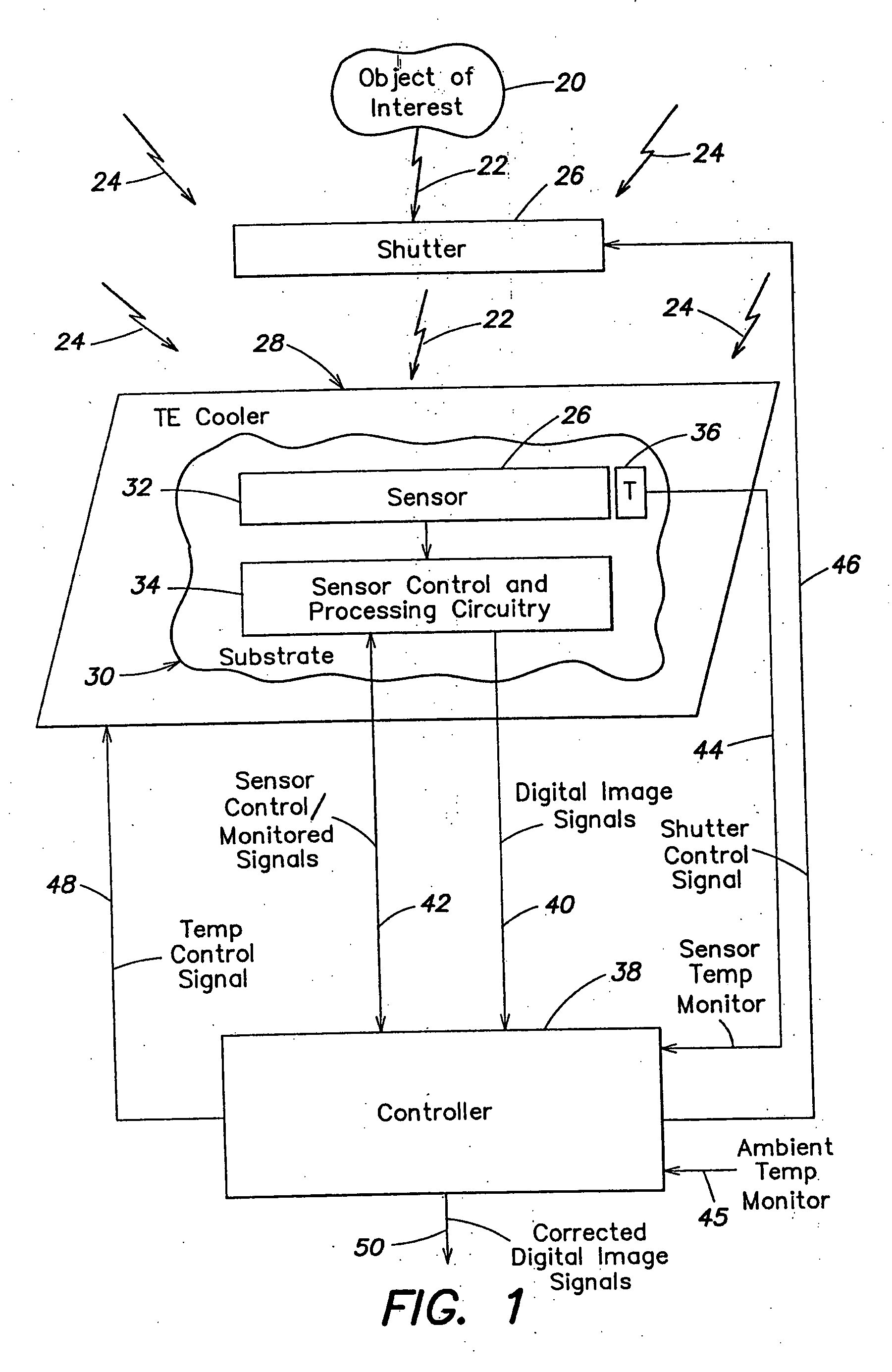Real-time radiation sensor calibration
a real-time radiation and sensor technology, applied in the field of real-time radiation sensor calibration, can solve the problems of difficulty in separating signals, and various undesirable components in detector output signals
- Summary
- Abstract
- Description
- Claims
- Application Information
AI Technical Summary
Benefits of technology
Problems solved by technology
Method used
Image
Examples
Embodiment Construction
As discussed above, a radiation sensor outputs signals based on radiation that impinges on the sensor. Such a sensor may be used in an imaging system that produces images (e.g., on a display) based on radiation incident to the sensor from a scene of interest. The sensor output signals, however, may contain significant undesirable components due in part to changes in temperature of the sensor itself that are not necessarily due to the radiation of interest. In some cases, these undesirable signal components may be hundreds of times larger than the instantaneous signals resulting from the radiation of interest in the scene being imaged, thereby detrimentally reducing the dynamic range of the sensor and / or processing circuitry associated with the sensor with respect to the radiation of interest.
With respect to undesirable signal components, changes in temperature of the sensor that are not related to the radiation of interest may have an average effect over time (i.e., a DC drift in...
PUM
 Login to View More
Login to View More Abstract
Description
Claims
Application Information
 Login to View More
Login to View More - R&D
- Intellectual Property
- Life Sciences
- Materials
- Tech Scout
- Unparalleled Data Quality
- Higher Quality Content
- 60% Fewer Hallucinations
Browse by: Latest US Patents, China's latest patents, Technical Efficacy Thesaurus, Application Domain, Technology Topic, Popular Technical Reports.
© 2025 PatSnap. All rights reserved.Legal|Privacy policy|Modern Slavery Act Transparency Statement|Sitemap|About US| Contact US: help@patsnap.com



